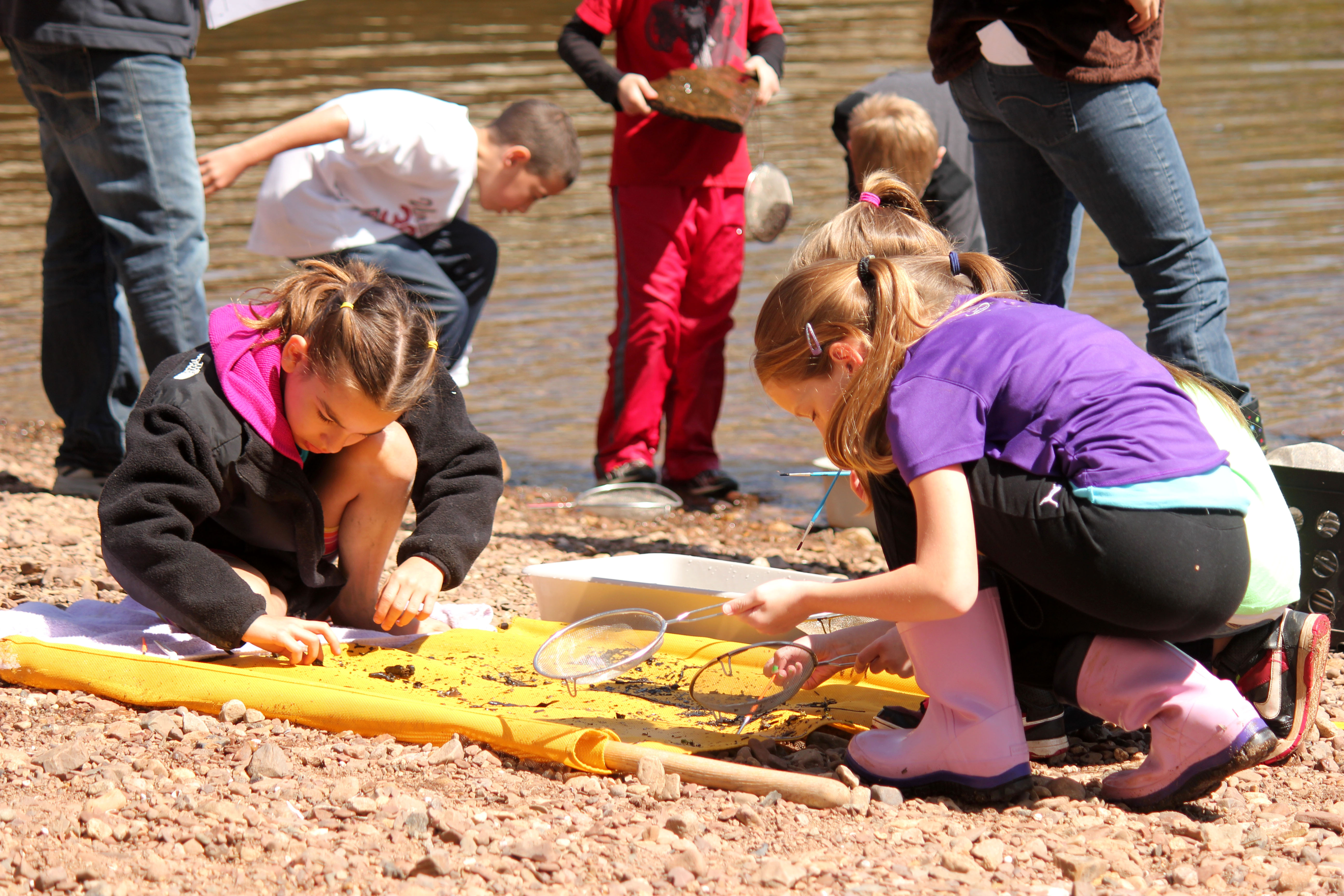 Our WaterWays program is a traveling stream exploration program that helps students create connections to the natural world! Our trained naturalists meet students in the classroom for an introduction to watershed conservation, biological life in the stream, and groundwater systems. Our next session is at stream, where our guides take students through a full stream exploration – observing habitat, making hypotheses, taking measurements, and best of all – searching for benthic macroinvertebrates (little critters) in the stream! The data we gather together gives us a snapshot of the health of the stream, fostering conversations on what we can do to protect our local ecosystems!
Our WaterWays program is a traveling stream exploration program that helps students create connections to the natural world! Our trained naturalists meet students in the classroom for an introduction to watershed conservation, biological life in the stream, and groundwater systems. Our next session is at stream, where our guides take students through a full stream exploration – observing habitat, making hypotheses, taking measurements, and best of all – searching for benthic macroinvertebrates (little critters) in the stream! The data we gather together gives us a snapshot of the health of the stream, fostering conversations on what we can do to protect our local ecosystems!
Join our new American Eel Project!
RHA is excited to have received funding to study the fascinating and mysterious 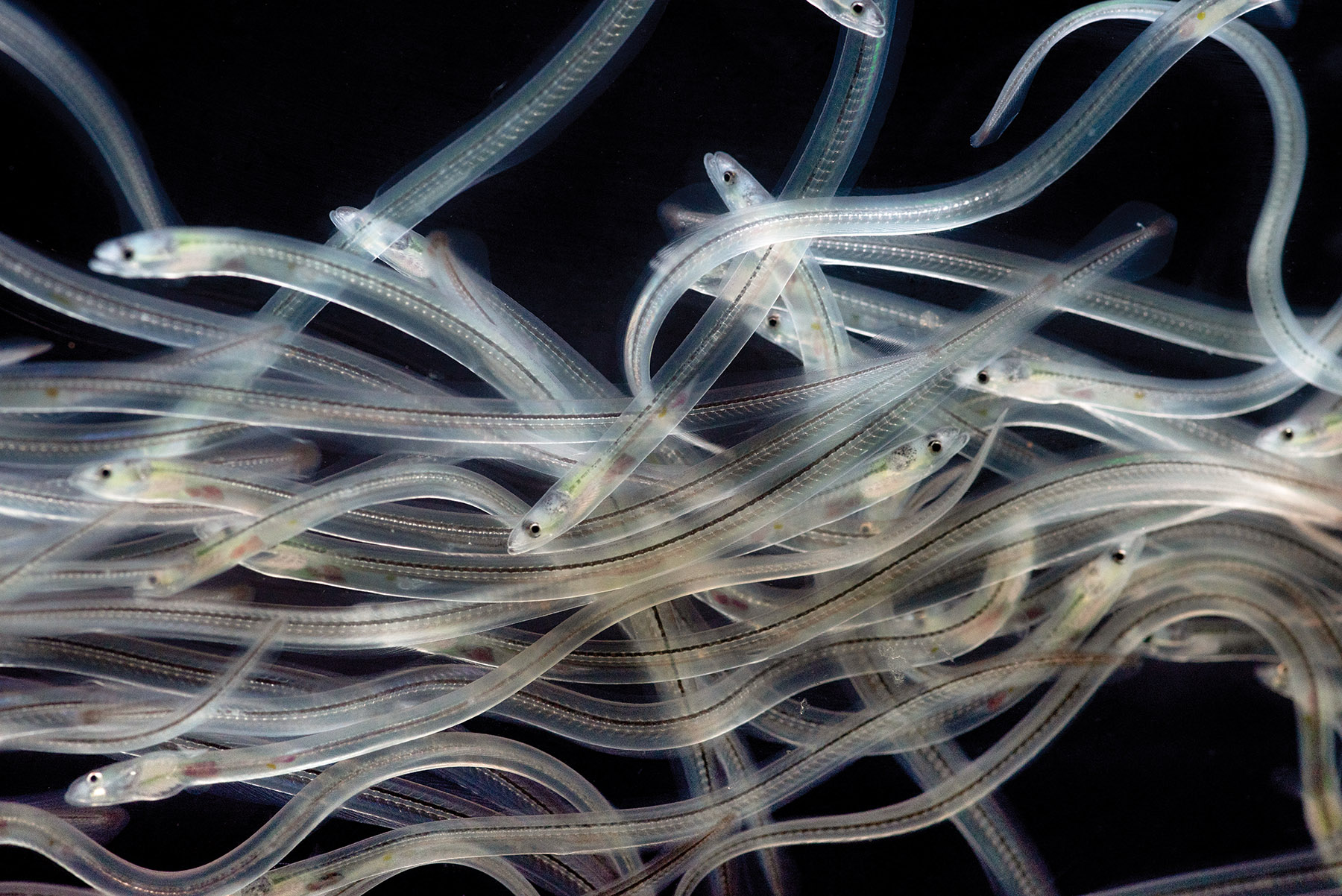 American Eel in our watershed with local schools. Be a part of this new study with your students!
American Eel in our watershed with local schools. Be a part of this new study with your students!
RHA Naturalists will present in the classroom about the eel life cycle and conservation status, and then guide you to create, install, and monitor an eel mop in a water body near your school. This project will incorporate science, engineering, critical thinking, conservation, and more. Opportunities for data management, reporting, trend analysis, history, language arts and visual arts as well! This project can be adapted for grades 2 through 12.
This program is fully grant funded and free for a limited number of schools! Sign up now, contact Lauren Theis for more information!
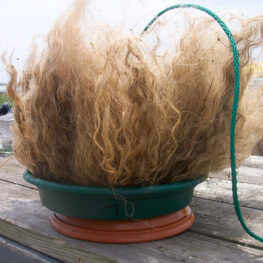
An Eel Mop – photo from Hudson Valley Clearwater Sloop
For more information on school programs, contact Director of Education, Lauren Theis
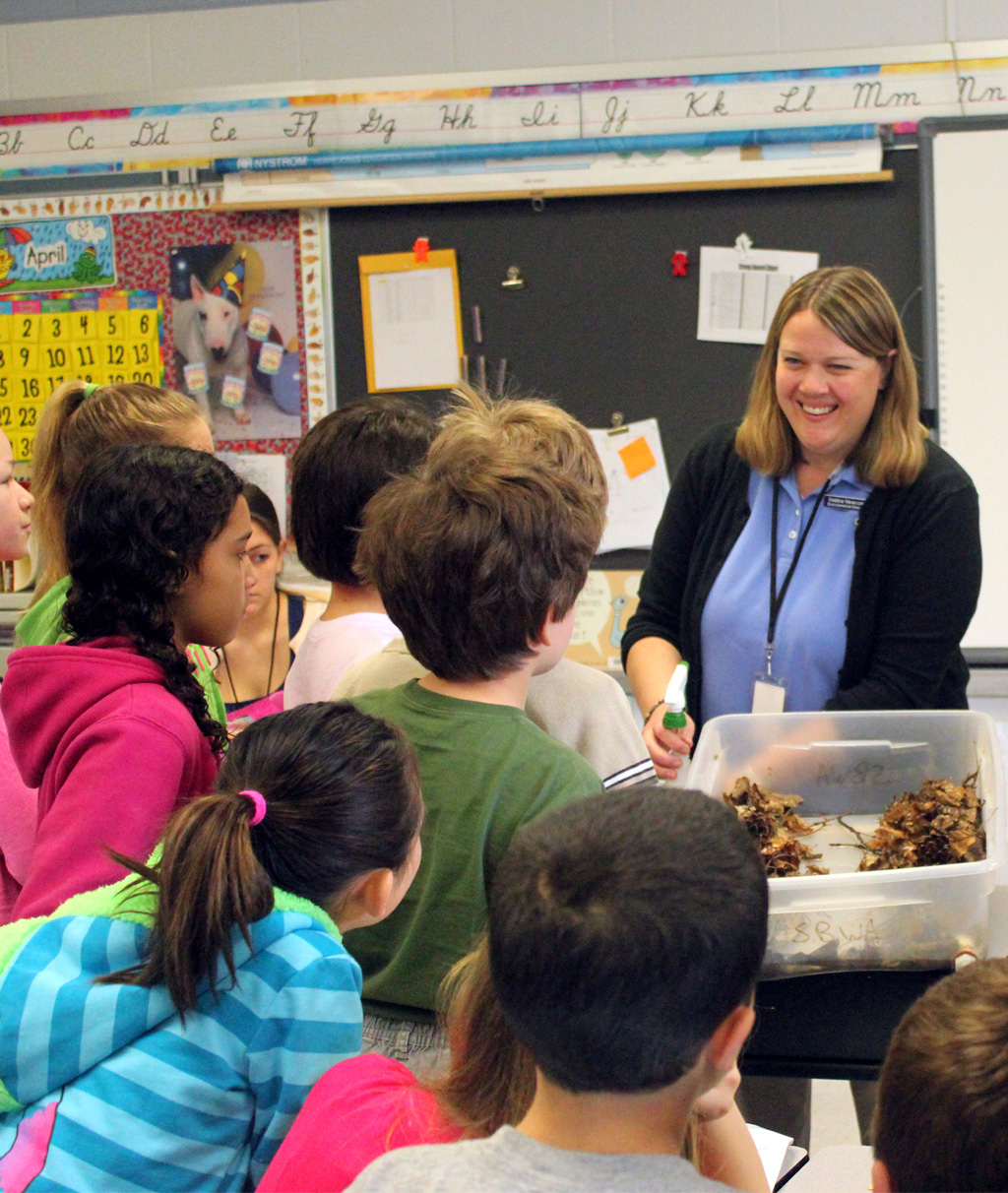
WaterWays In-Class Lesson
(30 to 90 minutes)
Choose two or three half-hour lessons. These can take place over Zoom/Google Meet or in your classroom.
Topics include:
Watersheds
Through a hands-on activity, students learn what watersheds are, how they function and why they are important...and what we can do to protect clean water!
Fulfills:
K-ESS3-3. Communicate solutions that will reduce the impact of humans on the land, water, air, and/or other living things in the local environment.
2-ESS2-2. Develop a model to represent the shapes and kinds of land and bodies of water in an area.
2-LS2-1. Plan and conduct an investigation to determine if plants need sunlight and water to grow.
5-ESS2-1. Develop a model using an example to describe ways the geosphere, biosphere, hydrosphere, and/or atmosphere interact
5-ESS2-2. Describe and graph the amounts of salt water and fresh water in various reservoirs to provide evidence about the distribution of water on Earth.
5-ESS3-1. Obtain and combine information about ways individual communities use science ideas to protect the Earth’s resources and environment.
4-ESS3-1. Obtain and combine information to describe that energy and fuels are derived from natural resources and their uses affect the environment.
Benthic Macroinvertebrates
A hands-on presentation teaches students what macroinvertebrates are and how they can be used as biological indicators of water quality. Students learn to identify macroinvertebrates by using a dichotomous key and preserved specimens.
Fulfills:
3-ESS3-1. Make a claim about the merit of a design solution that reduces the impacts of a weather-related hazard.
K-ESS3-3. Communicate solutions that will reduce the impact of humans on the land, water, air, and/or other living things in the local environment.
K-ESS3-1. Use a model to represent the relationship between the needs of different plants and animals (including humans) and the places they live.
Groundwater
Using a groundwater model, students learn about the importance of groundwater, how it moves through the earth, how it can become polluted and what we can do to protect it.
Fulfills:
K-LS1-1. Use observations to describe patterns of what plants and animals (including humans) need to survive
K-ESS3-3. Communicate solutions that will reduce the impact of humans on the land, water, air, and/or other living things in the local environment.*
K-2-ETS1-3. Analyze data from tests of two objects designed to solve the same problem to compare the strengths and weaknesses of how each performs
5-ESS2-1. Develop a model using an example to describe ways the geosphere, biosphere, hydrosphere, and/or atmosphere interact
5-ESS3-1. Obtain and combine information about ways individual communities use science ideas to protect the Earth’s resources and environment.
Water Chemistry
Students learn to conduct tests for pH, dissolved oxygen, alkalinity, nitrate, and turbidity to determine water quality.
Fulfills:
K-LS1-1. Use observations to describe patterns of what plants and animals (including humans) need to survive.
K-ESS3-3. Communicate solutions that will reduce the impact of humans on the land, water, air, and/or other living things in the local environment.
K-2-ETS1-3. Analyze data from tests of two objects designed to solve the same problem to compare the strengths and weaknesses of how each performs.
5-ESS2-2. Describe and graph the amounts of salt water and fresh water in various reservoirs to provide evidence about the distribution of water on Earth.
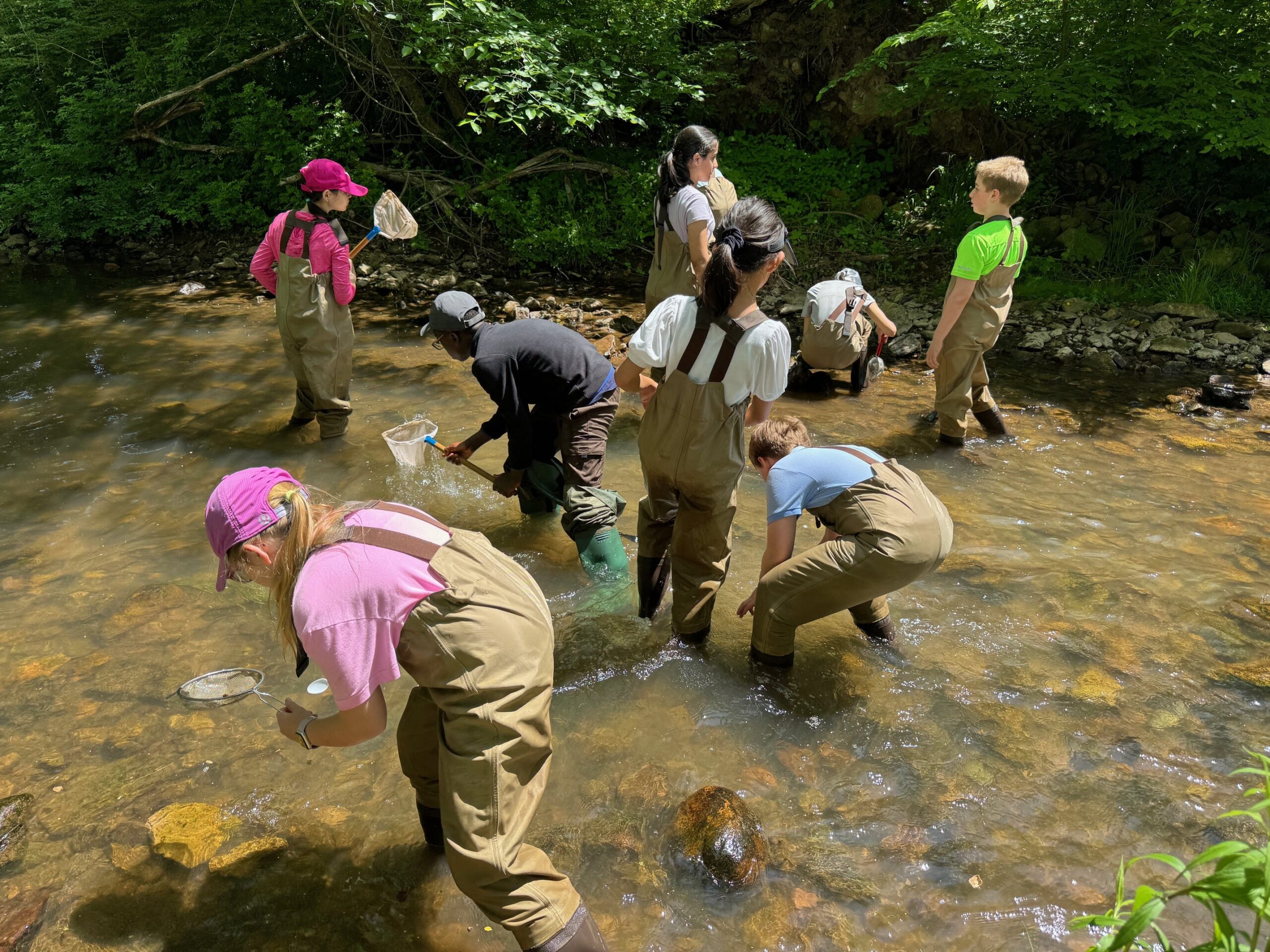 WaterWays Stream Exploration
WaterWays Stream Exploration
(2 to 2 1/2 hours)
We meet you at a stream, river or pond near your school and our team guides your students through a full stream assessment!
Activities include:
Habitat Assessment
Students make observations and take notes on the habitat and land uses at the stream site and surrounding area. Air and water temperature are measured and recorded, as are stream width, depth, and velocity. We explore the habitat and natural area surrounding the stream, incorporating math, writing, and art!
Fulfills:
3-LS4-3. Construct an argument with evidence that in a particular habitat some organisms can survive well, some survive less well, and some cannot survive at all.
3-LS4-4. Make a claim about the merit of a solution to a problem caused when the environment changes and the types of plants and animals that live there may change.
3-ESS3-1. Make a claim about the merit of a design solution that reduces the impacts of a weather-related hazard.
K-LS1-1. Use observations to describe patterns of what plants and animals (including humans) need to survive
5-ESS2-1. Develop a model using an example to describe ways the geosphere, biosphere, hydrosphere, and/or atmosphere interact
5-ESS2-2. Describe and graph the amounts of salt water and fresh water in various reservoirs to provide evidence about the distribution of water on Earth.
5-ESS3-1. Obtain and combine information about ways individual communities use science ideas to protect the Earth’s resources and environment.
4-ESS3-1. Obtain and combine information to describe that energy and fuels are derived from natural resources and their uses affect the environment.
Benthic Macroinvertebrate Assessment
Students learn how to collect benthic macroinvertebrates using a large kick net and smaller hand nets. We help students to identify the collected macroinvertebrates using a dichotomous key and use these biological indicators to calculate the water quality at the stream site.
Fulfills:
3-ESS3-1. Make a claim about the merit of a design solution that reduces the impacts of a weather-related hazard.
K-ESS3-3. Communicate solutions that will reduce the impact of humans on the land, water, air, and/or other living things in the local environment.
K-ESS3-1. Use a model to represent the relationship between the needs of different plants and animals (including humans) and the places they live.
5-ESS3-1. Obtain and combine information about ways individual communities use science ideas to protect the Earth’s resources and environment.
Chemical Analysis
Students measure pH, dissolved oxygen, alkalinity, nitrate, and turbidity of the stream, and discuss the results.
Fulfills:
K-LS1-1. Use observations to describe patterns of what plants and animals (including humans) need to survive
K-ESS3-3. Communicate solutions that will reduce the impact of humans on the land, water, air, and/or other living things in the local environment.
K-2-ETS1-3. Analyze data from tests of two objects designed to solve the same problem to compare the strengths and weaknesses of how each performs
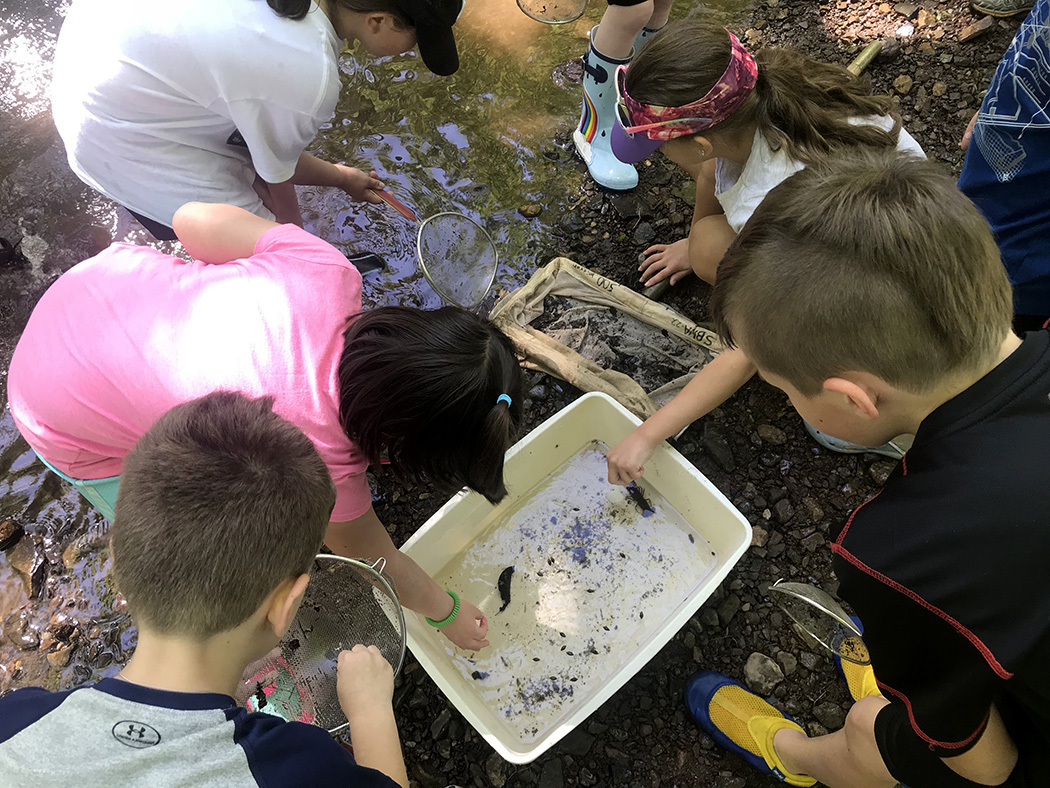 Pricing
Pricing
$490 per 30 students, includes the in-class lesson and one field lesson.
Financial assistance is available!
To learn more about these programs – including exact pricing based on the number and size of your group – please contact Director of Education Lauren Theis.
 Our WaterWays program is a traveling stream exploration program that helps students create connections to the natural world! Our trained naturalists meet students in the classroom for an introduction to watershed conservation, biological life in the stream, and groundwater systems. Our next session is at stream, where our guides take students through a full stream exploration – observing habitat, making hypotheses, taking measurements, and best of all – searching for benthic macroinvertebrates (little critters) in the stream! The data we gather together gives us a snapshot of the health of the stream, fostering conversations on what we can do to protect our local ecosystems!
Our WaterWays program is a traveling stream exploration program that helps students create connections to the natural world! Our trained naturalists meet students in the classroom for an introduction to watershed conservation, biological life in the stream, and groundwater systems. Our next session is at stream, where our guides take students through a full stream exploration – observing habitat, making hypotheses, taking measurements, and best of all – searching for benthic macroinvertebrates (little critters) in the stream! The data we gather together gives us a snapshot of the health of the stream, fostering conversations on what we can do to protect our local ecosystems! American Eel in our watershed with local schools. Be a part of this new study with your students!
American Eel in our watershed with local schools. Be a part of this new study with your students!

 WaterWays Stream Exploration
WaterWays Stream Exploration  Pricing
Pricing